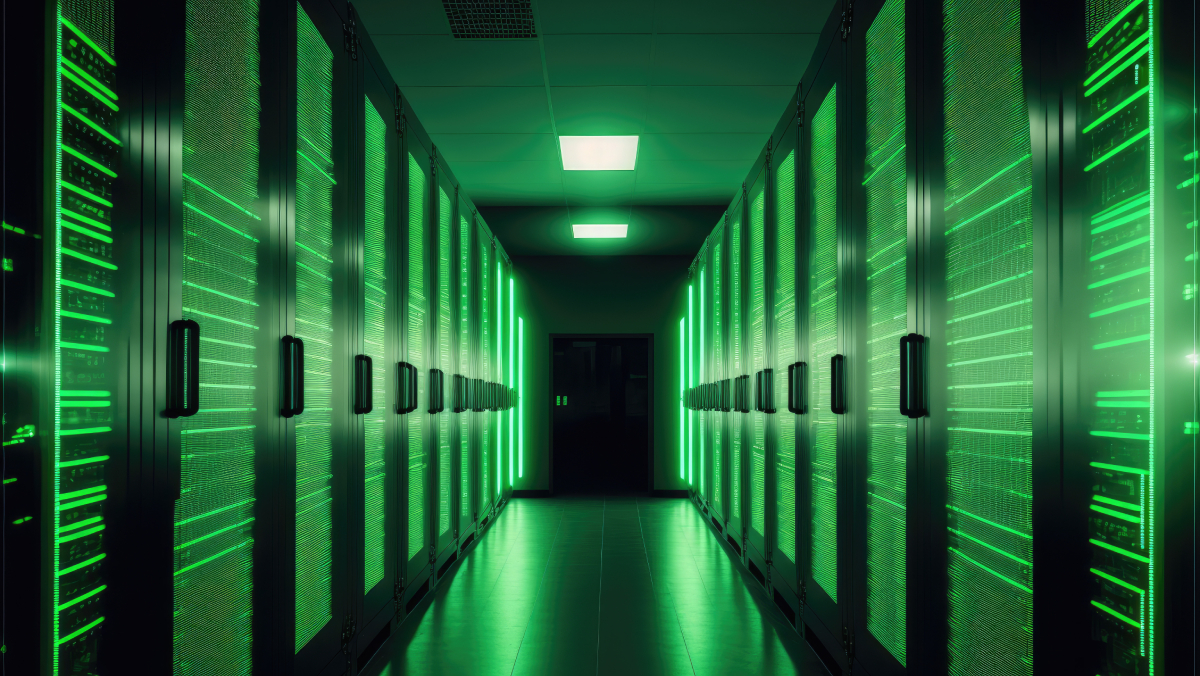Data centres are a huge source of carbon emissions, collectively pumping out the equivalent CO2 of a mid-sized country every year. In order to reach the UK’s carbon reduction goals, the emissions caused by the data centre industry must be significantly reduced over the next few years.
The environmental impact of data centres is already being closely considered and green construction is at the forefront of design. In fact, many centre operators are now pledging to reach zero-carbon emissions by 2030.
One area that must be focused on in order to meet this is investing in sustainable and efficient cooling solutions, as well as reducing the level of embodied carbon in data centres, and using analytics and smart insights to optimise how power is used.
Reliable and sustainable cooling
Data centres and IT cooling rooms are a unique environment, where a constant temperature must be maintained year-round – without fail. The spaces are built to be resilient with back-up generators and cooling equipment designed to work reliably 24 hours a day – and cooling equipment is there to stop computers from overheating and shutting down.
This means that as humidity levels vary, for example, reliable, close control cooling must come into play and keep equipment at the right temperate to work effectively. And it isn’t just the performance of cooling equipment on day one that needs to be taken into account; a chiller also needs to continue delivering that level of performance every day through to year ten and beyond.
This constant cooling requires a lot of energy, so the challenge is to cool spaces reliably while making sure it happens in the most energy efficient, sustainable way possible.
One way that this can be done is through advanced controls and the use of planned, preventative maintenance (PPM), which can help to keep products working as efficiently as possible. Chiller diagnostic checks and run-performance evaluation, in combination with inverter technology, all promote optimised performance and reduce wear and tear – which should in turn keep the energy being used most effectively.
Analytics and smart insights
As technology evolves, it’s now possible for real-time data visualisation and smart insights to also play a role in optimising the use of cooling equipment. By giving organisations this kind of detailed look into the operations of their data centres, it’s possible to reduce energy use in certain areas, and troubleshoot systems that could be running more efficiently.
This includes identifying all of the systems that a data centre has, locating them, tagging them and then turning data insights that would have previously been ‘invisible’ to operators into actionable intelligence to make things work better and more efficiently.
For example, data centres may be using multiple systems from different vendors – which often can’t talk to one another or use multiple dashboards. By accessing the data all together, it’s possible to better address many challenges – including performance management, accuracy of billing, energy costs and system capacity – and importantly, make necessary changes to keep systems operating in the most energy efficient way possible.
This kind of technology can support everyone involved in data centres – manufacturing companies, building owners, facility managers and even government organisations – to reduce the cost of deploying and maintaining IT cooling equipment, and bring down both the carbon footprint and the cost of running data centres.
Re-using energy
When it comes to improving data centre sustainability, there is also a big opportunity to re-use energy, rather than waste it. Heat pumps are the key here, as they have the potential to use recovered heat which is generated in data centres – which would otherwise be released out into the environment – and upgrade it to be distributed and heat local spaces, potentially via a heat network.
The transfer of ‘waste’ heat into something useful will help to reduce the amount of energy needed to generate new heat across the wider network.
Reducing embodied carbon
As well as reducing the energy created by cooling and heating within a data centre, it’s also important to consider the whole process of building, running, maintaining – and even demolishing – a data centre, and the carbon footprint that each stage has.
Fundamentally, data centres are buildings, which means that they contain a lot of ‘embodied’ carbon too. This includes the overall CO2 emissions in the metal, bricks and mortar used in the construction of the building, for example.
By looking at how design, construction and management decisions affect a data centre’s carbon footprint and how to minimise it – for example by calculating data centre CO2 – it is possible to bring down the overall environmental impact of a data centre.
Clearly, data centres play a very important role in keeping our IT systems running, but in doing so they are energy intensive spaces. Through more sophisticated analytics and monitoring, as well as taking into consideration how energy can be re-used and how embodied carbon can be reduced across every stage of building and running a data centre, it is possible to keep carbon emissions, energy use and running cost down.
On the road to reaching net zero carbon emission by 2050, and the even more ambitious goal of achieving a zero-carbon data centre by 2030, these factors will be key.

